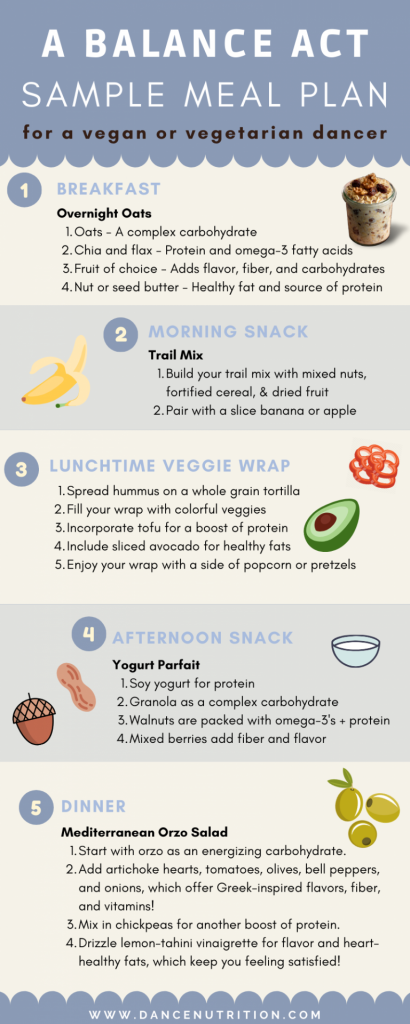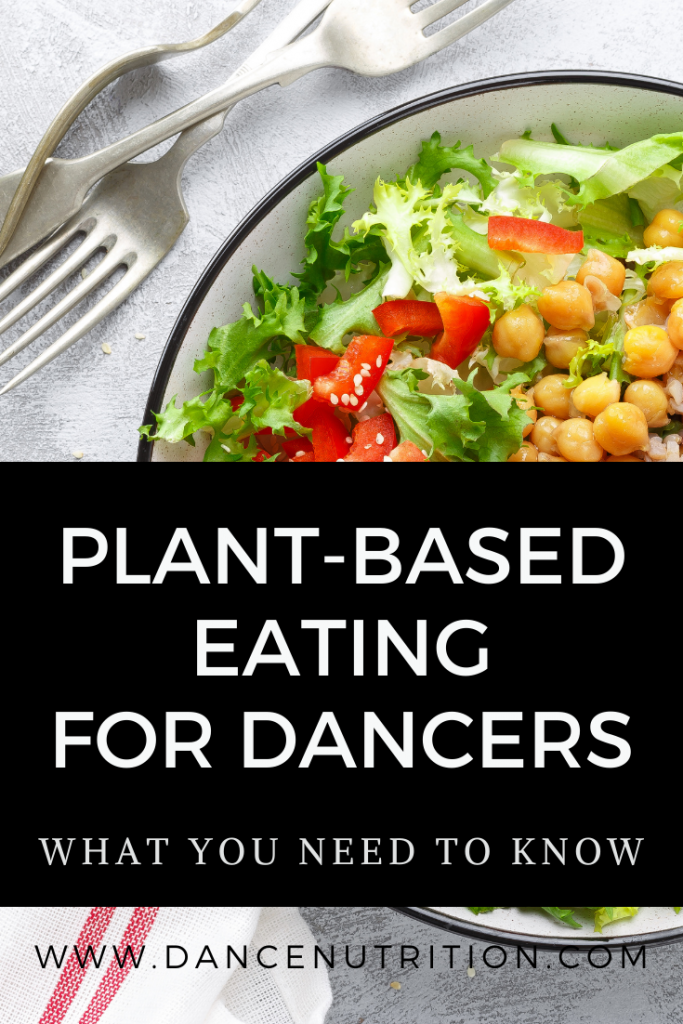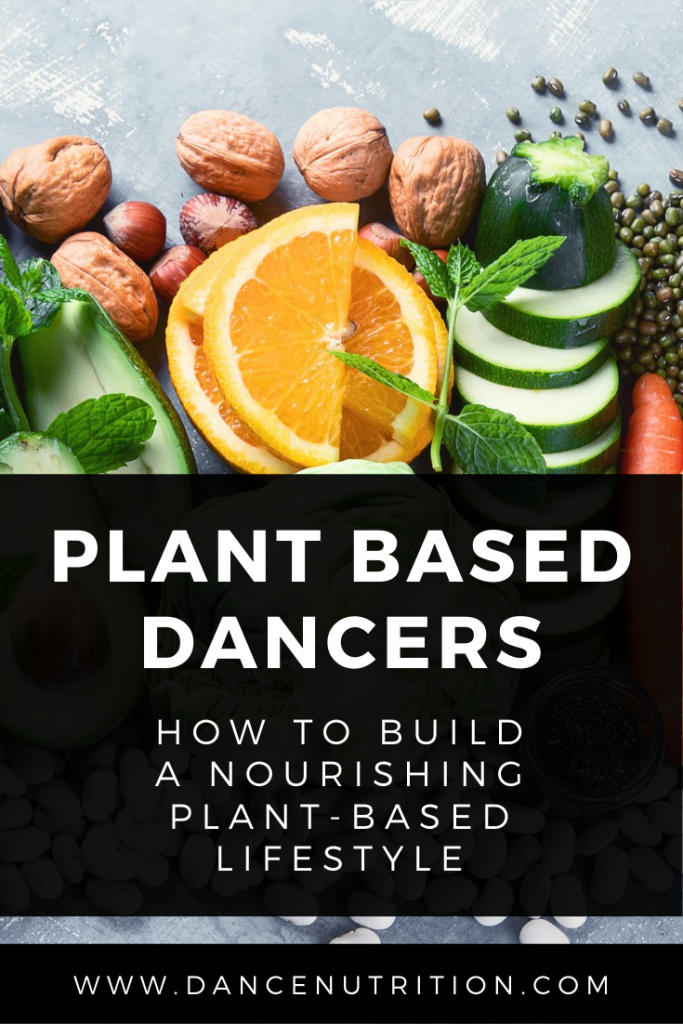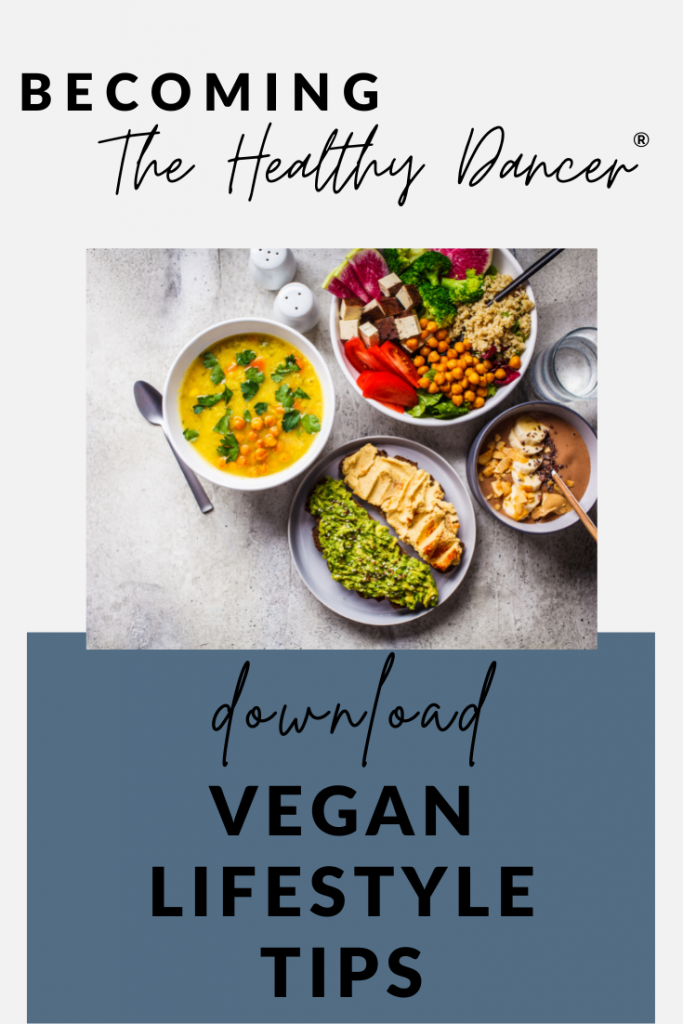A plant based diet— including veganism and vegetarianism can provide health benefits at any life stage. The same is true for athletes and dancers. With a well-planned menu, you can access all the essential nutrients from various vegetables, fruits, whole grains, legumes, soy products, nuts, and seeds. However, omitting animal products like meat, seafood, eggs, and dairy raises concerns about nutrient availability. In addition to this is the concern of restrictive eating— a common bystander of some plant-based lifestyles. In this blog post, you’ll access a complete guide to plant-based nutrition tailored for dancers.
What is a Plant-Based Diet?
A plant-based diet emphasizes reducing or eliminating animal products but doesn’t necessarily exclude them entirely. For most dancers, plant-based eating offers a mindful and flexible approach to adding more plants to their plates.
Vegetarianism and veganism, however, are two subtypes of plant-based diets that take things up a notch. Vegetarianism excludes meat, poultry, and fish but includes other animal products like eggs and dairy. There are several types of vegetarian diets:
- Lacto-Vegetarian: Includes dairy products but excludes eggs, meat, poultry, and fish.
- Ovo-Vegetarian: Includes eggs but excludes dairy, meat, poultry, and fish.
- Lacto-Ovo Vegetarian: Includes dairy products and eggs but excludes meat, poultry, and fish.
- Pescatarian: Includes fish and seafood but excludes meat and poultry.
As discussed in this article, veganism excludes all animal products, including meat, poultry, fish, dairy, eggs, and other animal-derived ingredients such as honey and gelatin. Veganism also extends beyond diet to exclude animal products in clothing, cosmetics, and other areas.
Plant-Based Eating for Dancers: The Benefits
Sustained Energy
Plant-based diets are high in complex carbohydrates, providing a steady release of energy essential for long rehearsals and performances.
Enhanced Recovery
Many plant foods are rich in antioxidants and anti-inflammatory compounds, aiding in faster muscle recovery and reducing soreness.
Digestive Health
The high fiber content in plant-based diets promotes a healthy digestive system, keeping you regular and preventing discomfort.
Nutrient Density
A varied plant-based diet is rich in vitamins, minerals, and phytonutrients, supporting overall health and well-being.
Plant-Based Eating for Dancers: The Challenges
Disordered Eating
If choosing a plant-based lifestyle for weight loss, or to manipulate your body’s shape/weight/size, you may be at risk for developing a challenged relationship with food. Restrictive lifestyles— even those most well-intended food rules, can risk a dancer’s long-term success. Click here to learn more about the risks of disordered eating with plant-based lifestyles— particularly vegan diets. If you’re unsure whether or not your choice is restrictive, read this article.
Energy Availability
Animal foods are rich in a variety of vitamins, minerals, and protein. However, these deficiencies are less of a concern so long your plant-based diet is well-planned (more on this below). Calorie inadequacies are a more common concern when plant-based diets become too restrictive. This is often the case for dancers who struggle to obtain enough food variety in their plant-based meal plan.
Hormonal Imbalances
Plant-based foods are typically higher in fiber and lower in fat. Though fiber is a beneficial component of many plant-based foods, excessive amounts can hinder the absorption of dietary fats and cholesterol (yes, we need some of this!), limiting the production of hormones like estrogen, testosterone, and progesterone. For dancers below a healthy weight and for those with a low level of body fat, absorption and utilization of key vitamins (A, D, E, and K) is also inhibited— further disrupting menstrual cycles and increasing a dancer’s risk of Relative Energy Deficiency in Sport.
Plant-Based Nutrition for Dancers
There are many benefits to adding more plants to our plates, but given these challenges, dancers choosing to start or continue plant-based lifestyles should consult with a Registered Dietitian Nutritionist to ensure meal plan adequacy. Along with eating enough to support your calorie needs, an extra effort can be made to obtain these specific nutrients:
#1: Protein
Today’s food landscape provides an abundance of budget-friendly high-quality options, making the risk of protein deficiency practically nonexistent. Pseudo-cereals like quinoa, ancient grains like farro and amaranth, beans, legumes, nuts, and seeds offer the essential amino acids needed for anabolic growth. The key is abundance and variety—getting in a variety throughout your day and week. Here are a few additional plant-based sources of protein:
- Edamame
- Buckwheat
- Pumpkin seeds
- Chickpeas (& hummus!)
- Almonds
- Hemp seeds
- Chia seeds
- Legumes-based pasta
- Sunflower seed butter
- Plant-based yogurts (like soy or almond milk)
#2: Calcium and Vitamin D
These nutrients work together to strengthen bone tissue. Since dairy is rich in calcium and vitamin D, plant-based dancers should recognize alternatives to support bone health. Fortified plant-based kinds of milk like soy and almond milk, along with tofu, leafy greens, squash, figs, flax, chia, and white beans are abundant in calcium.
For vitamin D, 10-15 minutes of sunlight daily can help. However, this can be hard for dancers during the gloomy winter months. Vitamin D-rich foods like mushrooms and fortified breakfast cereal offer reliable ways to boost your intake.
#3: Iron
Mainly found in red blood cells, iron is most abundant in animal meat and the first nutrient lacking for plant-based dancers. Monthly menstruation can further exacerbate losses. The iron from food differs depending on the source. Heme iron comes from animal proteins whereas non-heme iron comes from plant foods like whole grains, nuts, seeds, legumes, and leafy greens. Though heme iron is known to be more absorbable, plant-based dancers can support their iron needs with strategic planning. Click here to learn more about accessing iron from a plant-based diet.
#4: Vitamin B12
Most abundant in animal-based foods, vitamin B12 can also be obtained from fortified cereals and nutritional yeast. Click here to learn more about vitamin B12 and how to access it from your plant-based meal plan.
#5: Fats
Fats are important for brain health and hormone production. Sources include avocados, nuts, seeds, olives, butter, and coconut oil.
Plant-Based Nutrition for Dancers: Key Takeaways
A plant-based diet can be a powerful tool for dancers, but careful planning is encouraged. To prevent challenges and deficiencies, dancers should seek support from a dietitian who can craft a plan that prioritizes food abundance and variety. Get started with The Healthy Dancer® Survival Guide— a resource to help you build a balanced plant-based meal lifestyle.
Plant-Based Meal Ideas
- Smoothie with spinach, banana, mixed berries, chia seeds, almond butter, and fortified almond milk.
- Whole grain toast with avocado and nutritional yeast.
- Quinoa salad with black beans, cherry tomatoes, cucumber, bell peppers, corn, and a lime-cilantro dressing.
- Stir-fry with tofu, broccoli, bell peppers, snap peas, and brown rice.
- Squash (or potato boats) filled with lentil “bolognese”
For more ideas, save this image!






